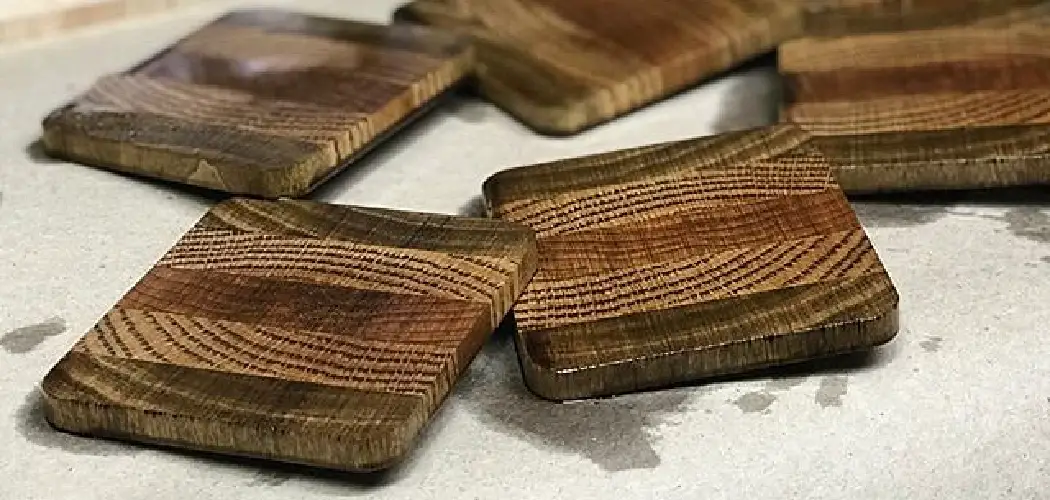Wood finishes play an important role in protecting our furniture and other wooden possessions from the everyday wear and tear that they encounter. There are many types of wood finishes available on the market, but one of the most popular choices is walnut oil.
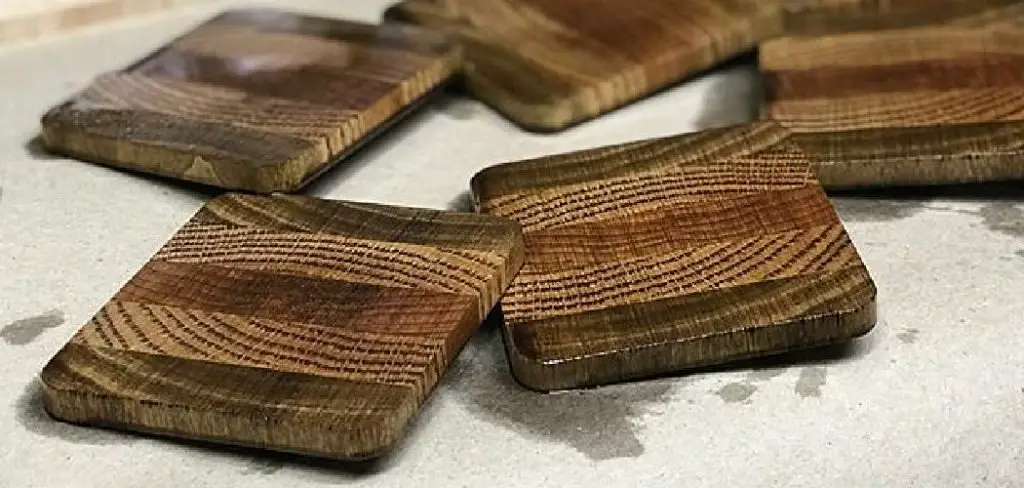
Walnut oil has a natural look and feels that many people find appealing, and it is also easy to apply. However, using walnut oil can be tricky, so here are some simple steps and tips on how to use walnut oil on wood to help you get the most out of this finish.
Summary: Walnut oil is a great way to keep your wood looking new and shiny. Apply a small amount to a cloth and wipe the surface of the wood. Be sure to work in a circular motion to avoid any streaks.
Benefits of Using Walnut Oil on Wood
Here are some benefits of using walnut oil on wood:
- It is a natural product that does not contain any chemicals or toxins.
- Great way to protect your wood from damage caused by water, heat, or sunlight.
- Help to repair minor damage to wood, such as scratches and dents.
- Bring out the natural beauty of wood grain and color.
- Easy to apply and requires no special equipment or skills.
- It is a non-toxic and environmentally friendly option for treating wood.
- Can be used on both indoor and outdoor furniture.
- Does not require regular maintenance like other finishes such as varnish or lacquer.
- It is an excellent choice for people with allergies or sensitivities to chemicals.
- It can be easily removed if you decide to change the look of your furniture in the future.
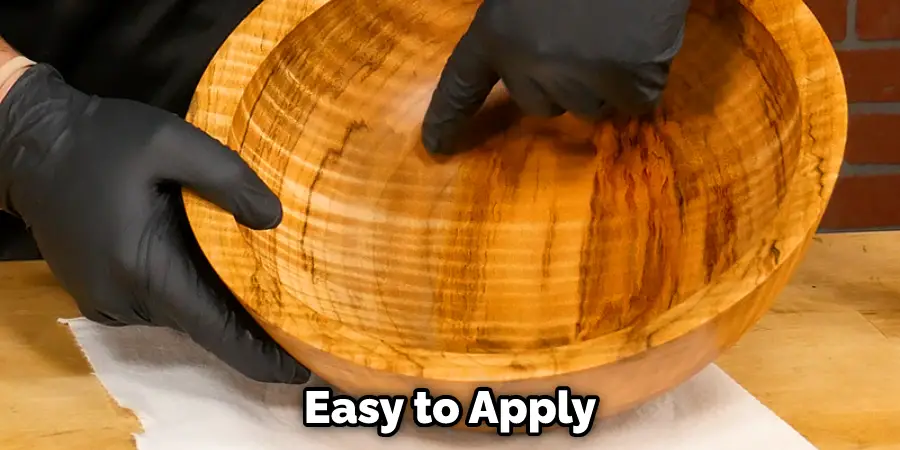
10 Steps to How to Use Walnut Oil on Wood
Step 1: Gather Your Supplies
First, you need to gather your supplies. Without gathering the necessary supplies, you won’t be able to use walnut oil on wood properly. So, this will be the first and foremost step you must take. The supplies that you need are:
- A clean, lint-free cloth
- gloves
- Walnut oil
- A container or bowl to pour the oil into
- Stirring stick
If you have all of these things, then you can move on to the next step.
Step 2: Pour a Small Amount of Oil Into the Bowl
Once you have gathered all of the necessary supplies, the next step is to pour a small amount of oil into the bowl. You don’t need a lot, just enough to coat the cloth. Ensure all the oil is in the bowl before moving on to the next step. Otherwise, you may end up making a mess.
Step 3: Soak the Cloth in the Oil
After pouring a small amount of oil into the bowl, the next step is to soak the cloth in the oil. Do this for a few minutes, ensuring that the entire cloth is soaked through. This will help to make sure that the wood is adequately coated. Don’t forget to wear gloves while doing this!
Step 4: Wring Out the Cloth
Once the cloth is soaked, the next step is to wring it out. You don’t want too much oil on the cloth, as this can cause problems later on. Just give it a good squeeze until most of the oil has been wrung out. Just make sure that the cloth is wet but not dripping.

Step 5: Apply the Oil to the Wood
Now, it’s time to apply the oil to the wood. Take your cloth and start rubbing it into the wood in a circular motion. Be sure to cover all of the surface area, as this will help to ensure that the wood is protected. Take a deep look at the wood to make sure that there are no areas that you missed.
Step 6: Let the Oil Sink In
After you have applied the oil to the wood, the next step is to let it sink in. This process can take a few hours, so be patient. You don’t want to rush this step, as it is important to let the oil do its job. Otherwise, you can ruin the wood.
Step 7: Wipe Off the Excess Oil
After a few hours, it’s time to wipe off the excess oil. Take a clean, lint-free cloth and start wiping away any of the oil that is sitting on the surface of the wood. You don’t want too much oil, as this can cause problems later on. Just make sure that the wood is lightly coated.
Step 8: Let the Wood Dry
Once you have wiped off the excess oil, the next step is to let the wood dry. This can take a few hours, so be patient. After completely drying, your wood should have a nice, deep color. Be careful with the wood, though, as it will be quite soft and vulnerable to dents and scratches until the oil has completely soaked in.
Step 9: Apply a Second Coat (Optional)
If you want an even deeper color, you can apply a second coat of oil. Just repeat steps 6 and 7. Remember, less is more when it comes to oiling wood. You don’t want too much oil, as this can cause problems later on. Just make sure that the wood is lightly coated.
Step 10: Let the Wood Sit
After applying the second coat of oil (if desired), the next step is to let the wood sit. This will allow the oil to soak in and protect the wood completely. How long you let the wood sit will depend on the type of wood. However, it is generally recommended to let it sit for at least 24 hours.
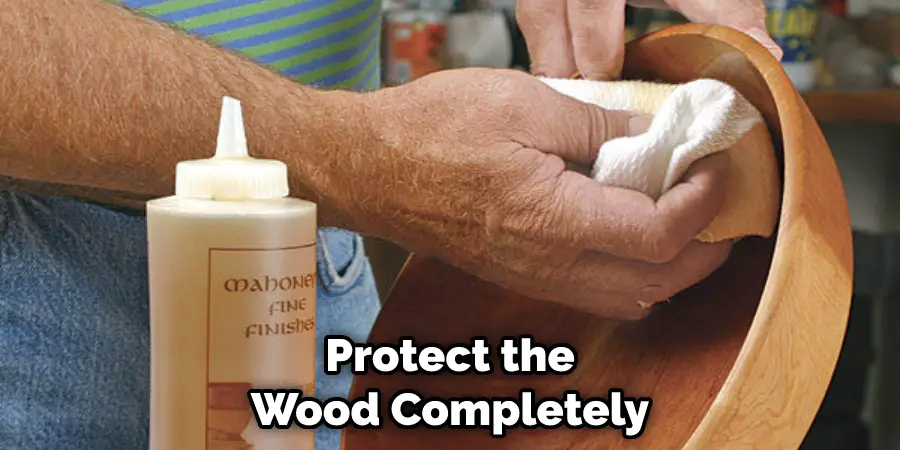
There you have it! These are the steps that you need to take to use walnut oil on wood. Just remember, less is more when it comes to oiling wood. You don’t want too much oil, as this can cause problems later on. Make sure the wood is lightly coated, and you should be good to go!
How Long Does It Take for Walnut Oil to Dry on Wood?
It is best to allow the oil to soak into the wood for at least 30 minutes before wiping off the excess. How long it takes for the oil to dry completely will depend on the type of wood and the conditions in your home. In general, however, you can expect it to take about 24 hours for the oil to cure fully. Don’t rush the process, as this will give the oil time to penetrate the wood and protect it from the inside out.
Does Walnut Oil Make Wood Darker?
No, walnut oil does not make wood darker. It can help to protect the wood and keep it looking its best. Walnut oil is a natural product that contains nutrients that are beneficial for wood. When applied to the wood, it can help to keep it from drying out and cracking. Additionally, walnut oil can help to prevent the wood from fading.
Does Walnut Oil Harden Wood?
No, walnut oil does not harden the wood. It is often used as a wood conditioner to help keep the wood from drying out and becoming brittle. Walnut oil can also restore the natural luster and beauty of wood that has become dull over time. It is very effective at bringing out the rich, warm color of walnut and other hardwoods.
When applied to wood, walnut oil penetrates deep into the grain to condition and protect it from within. This makes it an ideal treatment for both new and old furniture. It is also safe on food surfaces, such as cutting boards and countertops.
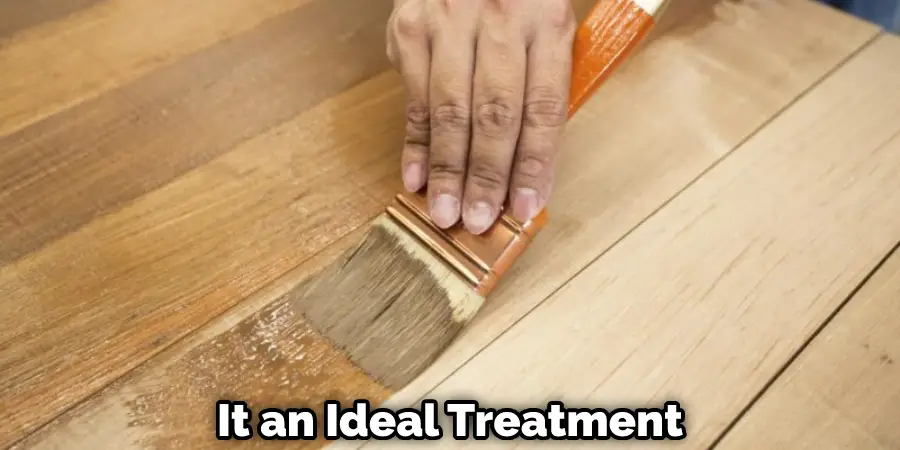
Tips You Need to Know Before Using Walnut Oil on Wood
Walnut oil is great for saturating and protecting wood surfaces. It’s often used on countertops, cutting boards, and wooden utensils. If you’re looking to add a bit of shine and protection to your wood, walnut oil is a great option. Here are a few things you should know before using it.
- Always test the oil on a small, hidden area first. Otherwise, you may end up having an unwanted reaction to the wood.
- If you’re using oil for outdoor furniture, choose a weather-resistant product.
- Be sure to apply the oil evenly and in the grain direction to avoid any streaking.
- Allow the walnut oil to soak into the wood for at least 30 minutes before buffing it off with a clean cloth.
- You may need to reapply the oil every few months, depending on how often the furniture is used.
- When applying the oil, always use gloves and work in a well-ventilated area.
If you’re not sure how the oil will react to the wood, it’s always best to consult with a professional before proceeding.
Frequently Asked Questions
Do You Apply Walnut Oil to Wood Finish?
The best way to apply walnut oil to wood finishes is likely going to vary depending on the finish, the type of walnut oil, and your specific project. However, some general tips that may be helpful include:
- Apply a small amount of walnut oil to a cloth or paper towel, and use it to clean off any dust or dirt from the surface of the wood.
- Then, apply a thin coat of walnut oil to the surface of the wood using a brush or your hands.
- Let the oil dry for at least 30 minutes before applying any topcoats or sealants.
Does Walnut Oil Go Rancid on Wood?
The quality of Walnut Oil will vary depending on the extraction process and storage conditions. However, it is generally safe to store Walnut Oil in a dark and dry place for up to 2 years without fear of spoilage.
Is Walnut Oil a Sealant?
Yes, walnut oil can be a sealant because of its high levels of vitamin E. This essential fatty acid helps to promote the growth of skin cells and inhibits the production of enzymes that break down skin barriers. Additionally, it has been shown to help protect the skin from environmental damage caused by pollutants and other toxins.
So, if you’re looking for a natural way to prevent dryness and signs of aging in your skin,Walnut Oil may just be your answer. It is also effective in protecting against sunburns due to its SPF properties.
Can You Use Walnut Oil Instead of Linseed Oil?
Yes, you can use walnut oil instead of linseed oil. While both oils are used for painting and artistic applications, walnut oil is a better option if you are looking to avoid toxic chemicals. Walnut oil is also anti-inflammatory and has a high level of antioxidants that can protect the skin against harmful damage.

Conclusion
Walnut oil is a great way to protect and enhance the appearance of your wood furniture. It’s easy to apply, making the wood look richer and more lustrous. And also it gives the wood surface protection from within, making it more durable.
Follow these simple steps on how to use walnut oil on wood to give your furniture a beautiful finish that will last for years. Have you tried using walnut oil on your wood furniture? What results did you see?
You Can Check It Out to Sterilize Wood for Reptiles

